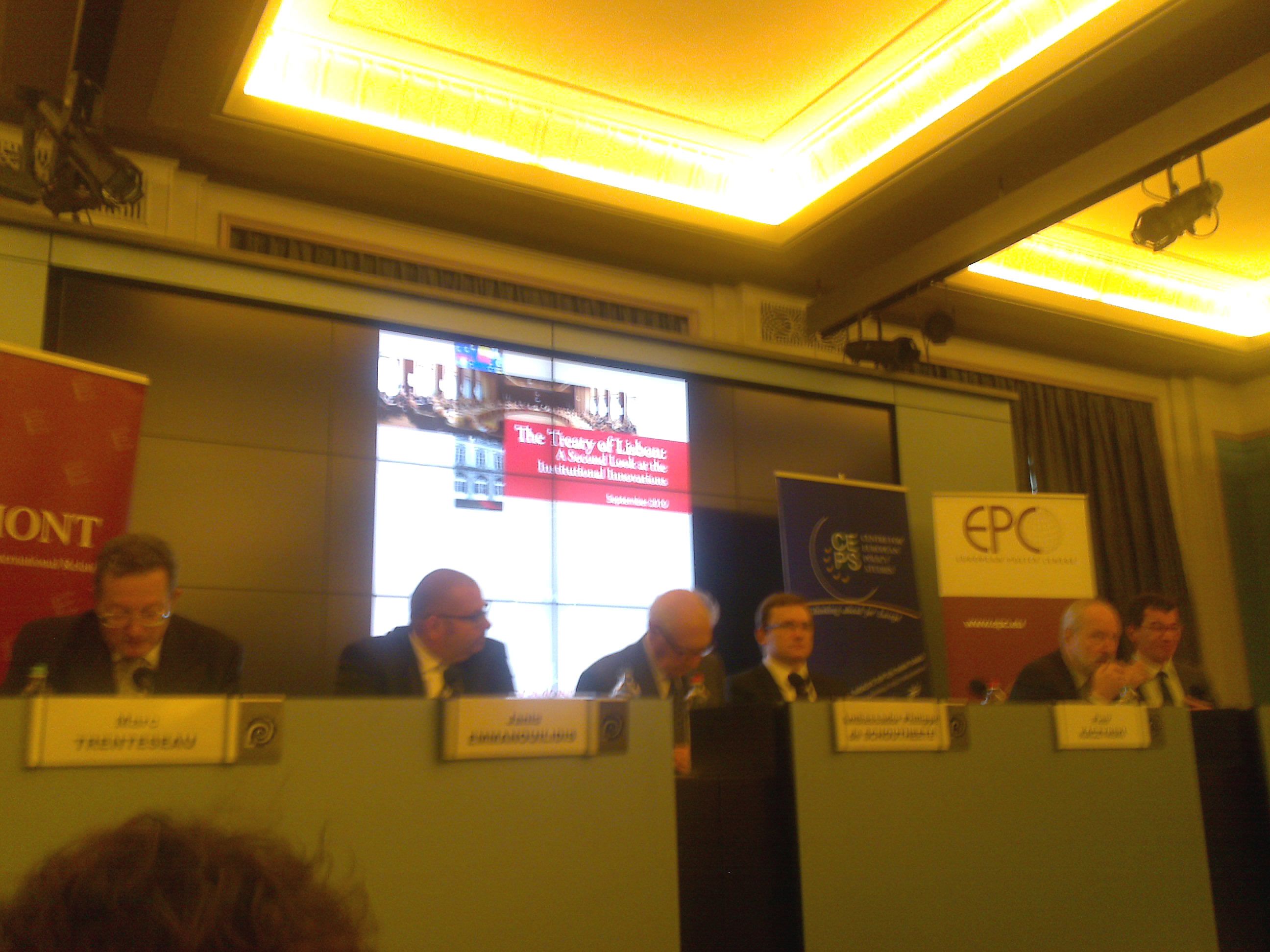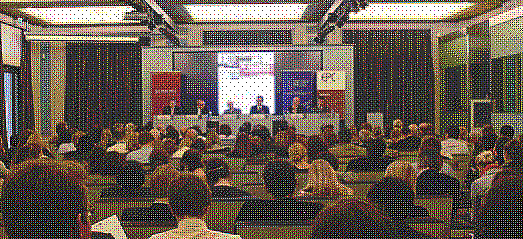Programme:
-
Introduction by Marc Trenteseau, Director General, EGMONT,
-
Presentation of the Joint Study by Janis Emmanouilidis, Senior Policy Analyst, EPC, Ambassador Philippe de Schoutheete, EGMONT, Member of the CEPS Board of Directors, Piotr Kaczynski, Research Fellow, CEPS -Reactions/comments by Xavier Demoulin, Director General, European Affairs, Belgian Ministry of Foreign Affairs, Jean-Claude Thébault, Head of the Bureau of European Policy Advisors, European Commission
-
Questions from the floor
- Conclusions by Viscount Etienne Davignon, Chairman, EGMONT, Member of the CEPS Board of Directors.
By Piotr Maciej Kaczyński & Peadar ó Broin et al.
Joint CEPS, EGMONT and EPC Study - Sept. 2010:
Three years ago, three Brussels based think tanks thought it useful to join efforts in analysing potential implications of the Lisbon Treaty in the field of institutions.
At the time that Treaty had not been ratified and the question of whether it would ever come into force was an open one. The result of their efforts was published in November 2007 as a joint study under the title The Treaty of Lisbon: Implementing the Institutional Innovations. It attracted the attention of policy makers, national and European administrations and the academic community.
Now that the Treaty has come into force and that the institutional innovations are gradually being implemented, the same three think tanks have thought it useful to revisit and develop their joint analysis. It is obviously too early to pass final judgment on the implications of the Lisbon Treaty on the institutional framework of the Union. Past experience shows that it takes a period of five to ten years to be able to exercise that sort of judgment. But some trends are already apparent.
One aspect common to all European treaties is that, as a general rule, they are not implemented in the exact context, and with the precise objectives, in which they were conceived. This is due in part to the length of the ratification process, particularly significant in the case of the Lisbon Treaty. It is also due to changing circumstances.
Two major challenges, which were not so obvious when the Treaty texts were initially drafted, determine the context in which they are being implemented. Climate and energy is accepted as the major issue of the new century and the European Union strives to influence global solutions, not always successfully as was shown by the Copenhagen conference. The banking and financial crisis, initiated in the United States, has economic and monetary consequences which are gradually unfolding, and they influence the balance of economic power in the world. Both challenges are a source of considerable external pressure as the European Union, like other world actors, tries to adapt to the co-management of globalisation.
It is with those considerations in mind, that ten issues have been identified and are dealt with in the following chapters. As in any collective effort, the three institutions involved share the general conclusions to which they have come, but do not necessarily feel bound by the specific formulations in each chapter.
The study produced by CEPS and two other Brussels-based think tanks – European Policy Centre and EGMONT – entitled The Treaty of Lisbon: A Second Look at the Institutional Innovations, was presented at the Résidence Palace on September 24th.
CEPS Fellow Piotr Kaczyński and other coauthors gave an overview of the main innovations introduced by the Treaty. XavierDemoulin (Belgian Ministry of Foreign Affairs) and Jonas Condomines Beraud (Bureau of European Policy Advisors, EU Commission) exchanged views on the shifting balance of power in the new institutional set-up. |
|
Philippe de Schoutheete, EGMONT Institute, said the European Council, “the fundamental motor of EU integration”, now had a legal status, an institutional reality and a semi-permanent President. The European Parliament, “wins power with every Treaty”, while the European Commission’s power has weakened, and with a Union of 27 diverse members, it is no longer capable of identifying “the common European good”.
Each Member State will have a Commissioner, who is seen as a representative of his/her Member State. On paper the ‘Presidency Triangle’ of the Heads of the European Council and the Commission and the High Representative of the Union for Foreign Affairs and Security Policy, seems very dysfunctional, but currently it works.
Piotr Kaczynski, CEPS, described how national parliaments had increased their power: they can officially object to Commission proposals if they breach the subsidiarity principle. However many governments already do this informally, and he doubted that many national parliaments would use this new power.
Turning to the Citizens’ Initiative, he felt this would be used by organised groups, rather than ordinary citizens, thus enhancing ‘advocacy’ democracy, and was concerned that it could be used by right-wing parties to highjack the political agenda, or it could frustrate citizens by the length of time for a successful Initiative to be implemented, (if ever).
Janis Emmanouilidis, Senior Policy Adviser, EPC, said the EU’s external policy was still ‘work in progress’, with Ms Ashton’s role the cornerstone of the new foreign policy. Creating the European External Action Service will be a mammoth task and a policy challenge will be to keep the Parliament at bay.
The first ten years of European Security and Defence Policy had been disappointing, with poor value for money so Europeans will have to increase their investment if the EU wants to remain influential in the field. The EU's defence system is transformed, and Member States can decide how much they will cooperate. It is unclear on what level many will do so, but there will have to a core group of Member States which contributes in most areas.
Xavier Demoulin, European Affairs, Belgian Ministry of foreign Affairs agreed that the Commission has been weakened and saw overlaps between the European Commission, the European Council President and the High Representative.
The European Parliament has flexed its muscles and now has more power of co-decision, and the rotating Presidency’s role is ensure that the Council, the European Council, the Parliament and the Commission work well together. In foreign policy terms, other countries need to understand the changes in EU foreign policy, and to help this, the EEAS must working by end 2010.
Jonas Condomines, Bureau of European Policy Advisors, European Commission, described the Lisbon Treaty as “a very European Treaty”, “full of risks, check and balances, but without being particularly worrying”, as it set in stone a substantial part of what already existed. He did not accept that the Commission’s power had been reduced, instead the scope of EU activities had increased.
He felt the idea that national parliaments had increased their power over the Commission, and the Citizens’ Initiative were both “fake novelties”, as they institutionalise what already happens in practice. |
|



